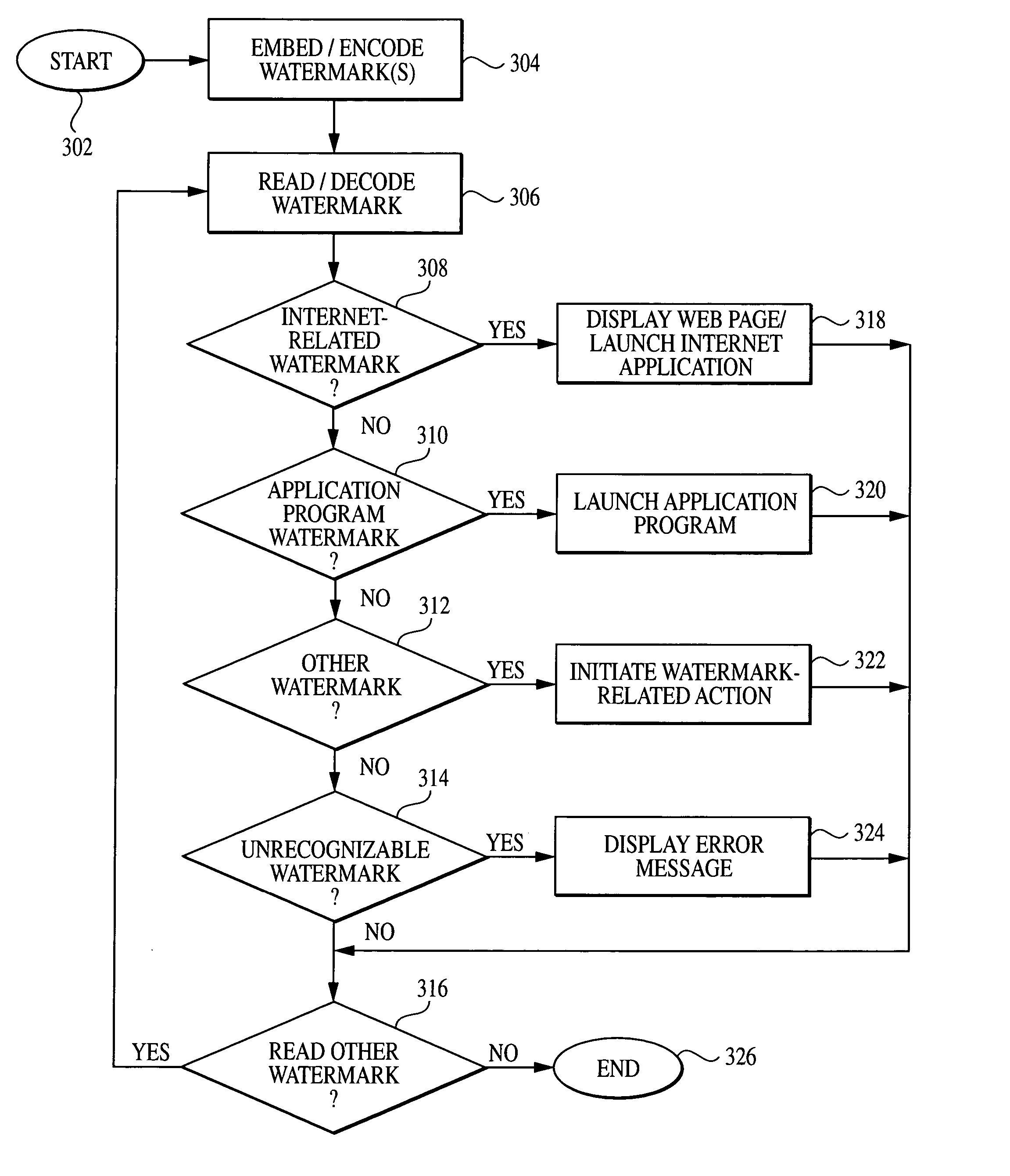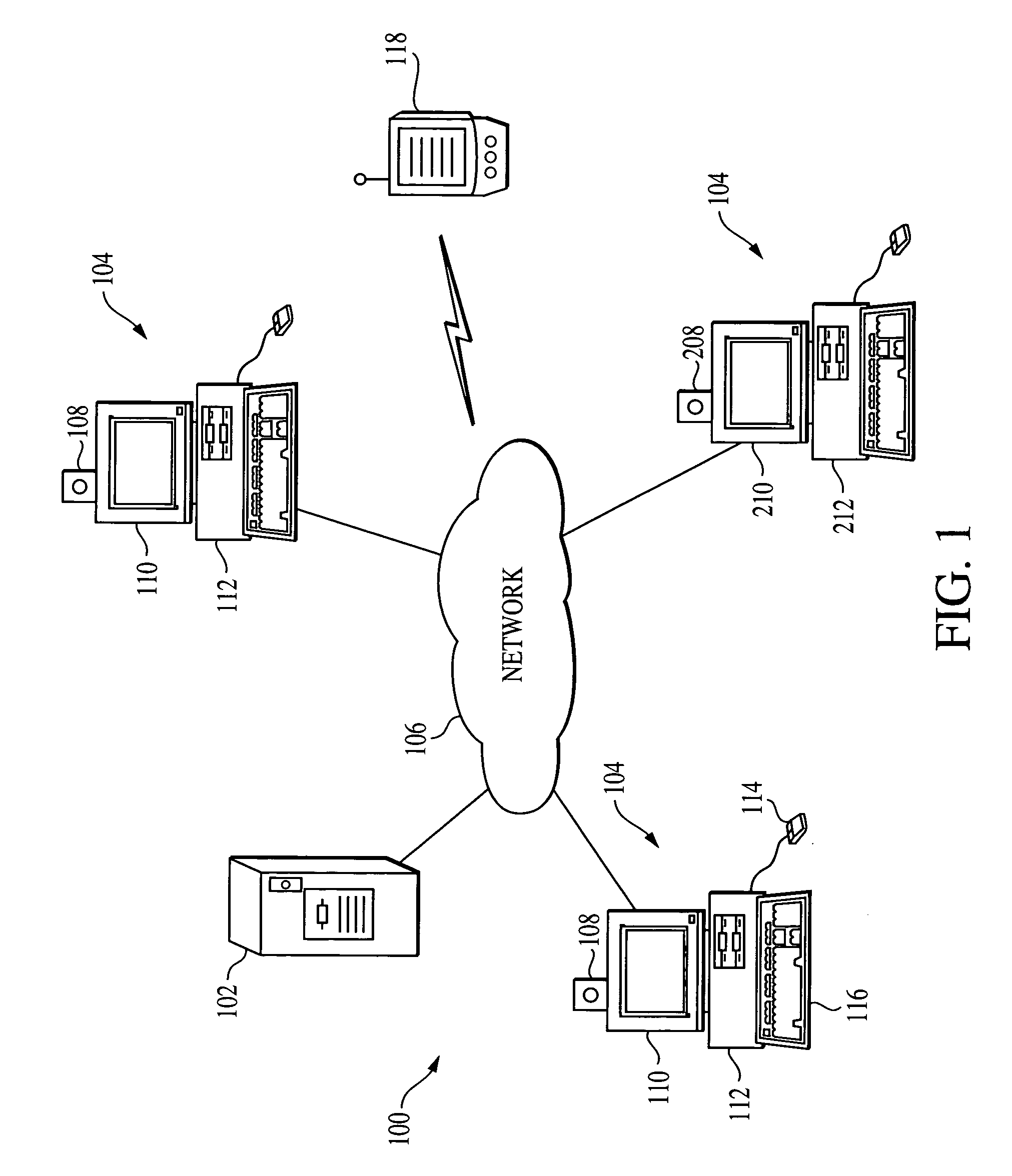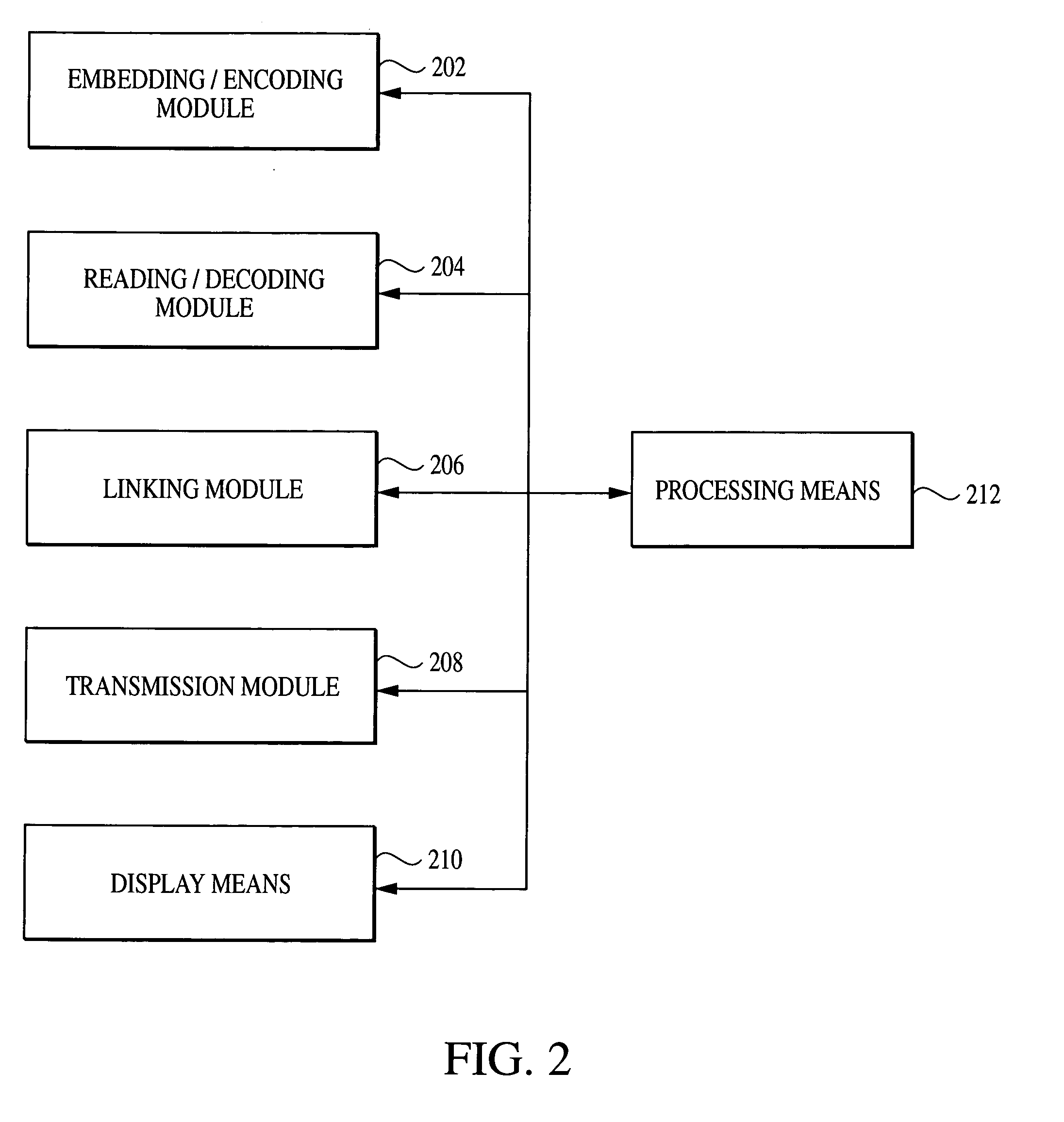System, method and medium for utilizing digital watermarks in instructional material
a technology of instructional materials and watermarks, applied in the field of digital watermarks, can solve the problems of insufficiently addressing the needs of students and/or teachers in textbooks, common outdated information, and information that is otherwise ill-suited to curricula and/or assessments
- Summary
- Abstract
- Description
- Claims
- Application Information
AI Technical Summary
Benefits of technology
Problems solved by technology
Method used
Image
Examples
Embodiment Construction
including the description of various features of the invention will be best understood when read in reference to the accompanying figures wherein:
[0026] FIG. 1 is a schematic of a network that can be used with at least one embodiment of the present invention;
[0027] FIG. 2 is a schematic diagram of an imperceptible digital watermark-driven system according to a generalized embodiment of the present invention;
[0028] FIG. 3 is a flow chart setting forth the steps carried out during the execution of at least one embodiment of the present invention;
[0029] FIG. 4A is an example of a first page of instructional material containing an image and a plurality of icons, each of which can be embedded with an imperceptible watermark;
[0030] FIG. 4B is an example of a second page of instructional material containing an image and a plurality of icons, each of which can be embedded with an imperceptible watermark;
[0031] FIG. 5 illustrates one example of a central processing unit for implementing a co...
PUM
 Login to View More
Login to View More Abstract
Description
Claims
Application Information
 Login to View More
Login to View More - R&D
- Intellectual Property
- Life Sciences
- Materials
- Tech Scout
- Unparalleled Data Quality
- Higher Quality Content
- 60% Fewer Hallucinations
Browse by: Latest US Patents, China's latest patents, Technical Efficacy Thesaurus, Application Domain, Technology Topic, Popular Technical Reports.
© 2025 PatSnap. All rights reserved.Legal|Privacy policy|Modern Slavery Act Transparency Statement|Sitemap|About US| Contact US: help@patsnap.com



